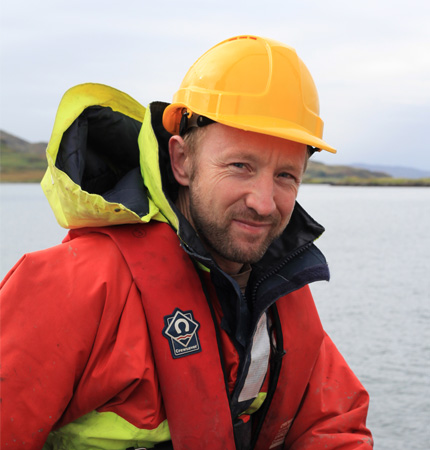Mapping Elasmobranch Distributions and Sensitivities for Conservation and Management.
Elasmobranchs (sharks, skates and rays) are important but poorly understood components of Scottish marine ecosystems, with several species listed as Priority Marine Features (PMFs) by the Scottish Government. Many of them are sensitive to fishing pressure and populations have declined as a result of overexploitation. As offshore development continues or accelerates, there is an interest in improving our understanding of distribution and habitat preferences of these species.
SharkScape is a three-year multidisciplinary project to enhance our knowledge on the distribution and sensitivity of specific elasmobranch species in the northern North Sea and West of Shetland study area.
Priority species include:
- Tope Galeorhinus galeus
- Porbeagle Lamna nasus
- Flapper skate Dipturus intermedius
- Common Blue skate Dipturus batis
- Basking Shark Cetorhinus maximus
Additional species of interest include:
- Sandy ray/skate Leucoraja circularis
- Shortfin Mako Isurus oxyrinchus
- Spurdog Squalus acanthias
- Kitefin shark Dalatias licha
SharkScape engages national governments, charities, offshore industry, academics, and regional authorities on nature conservation via an approach that parallels the International Union for Conservation of Nature’s (IUCN) recent call for such cross-sector collaboration to “turn the tide for nature and transform global commitments into inclusive action towards a nature-positive world” (IUCN Leaders Forum, 13 October 2023). SharkScape will adopt a multidisciplinary approach via a two-stage process:
- Stage 1 compiles data and background knowledge on the priority species within the study area
- Stage 2 develops new research programmes and contributes to ongoing research projects to fill knowledge gaps identified in stage 1. Combined with stage 1 outputs, this delivers an advanced knowledge base on the distribution and sensitivities of the species listed above.
SharkScape has the following objectives:
Objective 1: Compile and review the state of the science (distribution, biology, and ecology) and data supporting the current knowledge of the species listed above that can be used to identify knowledge gaps (stage 1).
Objective 2: Undertake a programme of research targeting the collection of new data to fill knowledge gaps on species listed above, with a focus on the priority species (stage 2).
Objective 3: Synthesise the outputs of SharkScape to advance our knowledge and understanding of elasmobranchs within the study area. This includes producing a report that presents species distribution, habitat use and sensitivities to anthropogenic activities (stage 2).
The role of SAMS
SAMS is contributing to this project in several ways. We are contributing to stage 1 through engagement with the offshore renewable energy (ORE) sector to capture existing and ongoing observations of Priority Species and Species of Interest among ORE assets that have not, as a rule, been reported to regulators or in the scientific literature. Subsequently, SAMS contributes to stage 2 in relation to cross-validation of different monitoring tools such as the use of eDNA.


